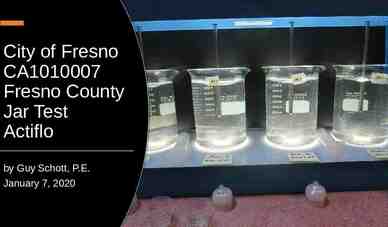Application-Aware Secure Multicast for Power Grid
27 Slides2.67 MB
Application-Aware Secure Multicast for Power Grid Communications Jianqing Zhang* and Carl A. Gunter University of Illinois at Urbana-Champaign * Now working at Energy Systems Research Lab, Intel Labs
Outline Motivation Introduction Formal Model for Multicast – Data Model and Publish-Subscribe Model – Multicast Configuration Anomaly Implementation: SecureSCL Performance Analysis of IPsec Based Multicast Conclusion 2
Multicast in Power Grid Systems Substation Networks PMU: Phasor Measurement Unit DNP3 PMUs 3
IEC 61850 Substation Network Substation Bus Abstract Communication Service Interface (ACSI) Generic Object Oriented Substation Event (GOOSE) * Ethernet Process Bus Sampled Measured Value (SMV) Data objects model Communication protocols suite Link layer multicast Substation Configuration Language (SCL) IEC: International Electrotechnical Commission HMI: Human Machine Interface PMU: Phasor Measurement Unit * Based on Baigent, D. et. al. IEC 61850 Communication Networks and Systems in Substations: An Overview for 4
Cyber Security Threats to Substation Networks Integrity – Tampered power grid status data – Faked control commands Cryptographically Secured Protocols? Confidentiality – Valuable raw data Availability – Data packets flood 5
Challenges: Manageable Configuration Complex and error-prone configuration for current systems – Intricate system designs – Changing specifications during design phases – Large and hardly auditable configuration files TVA Bradley Substation: 7.4Mbytes and 98K lines XML files – Proprietary configuration tools from multiple vendors – Complexity of current off-the-shelf security protocols and tools Security vulnerabilities due to incorrect system configuration 6
Challenges: Latency Requirements Timing requirements for real-time operations* – PMU: 30 times per second – Substation: event notification for protection e.g. GOOSE, 2-10ms VT: Volt Transformer CT: Current Transformer * IEEE Std. 1646: Communication Delivery Time Performance Requirements for Electric Power Substation 7
Challenges: Efficient Group Key Management & Configuration Integration with power grid systems – How to partition multicast groups in a particular domain, like a power substation? – What’s the role of each control device in a group? – How to distribute group keys? Standardized security protocols – How to integrate group key management with secure multicast protocols? 8
Approach: Application-Aware Secure Multicast Derive group membership by application data dependency in system functional configurations – Observation: data dependency determines publishsubscribe relationships and group memberships 9
Data Dependency in Substation Configuration Language (SCL) IED name "IED1" desc “Protective relay (publisher)" GSE cbName "gcbTrip" ldInst "PROT" Address P type "MAC-Address" 01-0C-CD-01-01-46 /P /Address /GSE DataSet name "dsTripLogic" FCDA daName "general" doName "Tr" / FCDA daName "q" doName "Tr“ / FCDA daName "general" doName "Op" / FCDA daName "q" doName "Op" / FCDA daName "general" doName "Op / FCDA daName "q" doName "Op" / /DataSet /IED Trip command IED name “IED2” desc “Switchgear (subsriber) ” LN desc "CircuitBreaker" inst "1" Inputs ExtRef daName "general" doName "Tr" iedName "IED1" / ExtRef daName "q" doName "Tr" iedName "IED1" / ExtRef daName "general" doName "Op" iedName "IED1" / ExtRef daName "q" doName "Op" iedName "IED1" / ExtRef daName "general" doName "Op" iedName "IED1" / ExtRef daName "q" doName "Op" iedName "IED1" / /Inputs /LN /IED IED name “IED3” desc “Switchgear (subsriber)” LN desc "CircuitBreaker" inst “2" Inputs ExtRef daName "general" doName "Tr" iedName "IED1" / ExtRef daName "q" doName "Tr" iedName "IED1" / ExtRef daName "general" doName "Op" iedName "IED1" / ExtRef daName "q" doName "Op" iedName "IED1" / ExtRef daName "general" doName "Op" iedName "IED1" / ExtRef daName "q" doName "Op" iedName "IED1" / /Inputs /LN /IED 10
Approach: Application-Aware Secure Multicast Derive group membership by application data dependency in system functional configuration Detect inconsistent configurations automatically Configure group key management system based on the derived group memberships and extended configuration files Raise the link layer multicast to the network layer and secure multicast traffic using IPsec 11
A Formal Multicast Model: Components D, the set of data objects E, the entities which have relationships with data objects – O, the set of data owners – C, the set of data consumer – P, the set of publishers – S, the set of subscribers G, the set of group controllers 12
A Formal Multicast Model: Publish-Subscribe Model 13
Publish-Subscribe Model in SCL: Ownership & Publication IED name "IED1" type "SecureIED" desc "Protective Relay" . LDevice inst "PROT" LN0 lnClass "LLN0" lnType "IED1-LLN0-Type" DataSet name "dsTripLogic" FCDA daName "general" doName "Tr" . ldInst "PROT" lnInst "1"/ FCDA daName "general" doName "Op" . ldInst "PROT" lnInst "1"/ . /DataSet GSEControl appID "TripGoose" datSet "dsTripLogic" name "gcbTrip"./ /LN0 . LN inst "1" lnClass "PTRC" lnType "IED1-PTRC-Type"/ /LDevice . /IED . DataTypeTemplates LNodeType id "IED1 PTRC Type" lnClass "PTRC" DO name "Tr" type "tPTRC TrOp"/ DO name "Op" type "tPTRC TrOp"/ /LNodeType /DataTypeTemplates 14
Publish-Subscribe Model in SCL: Consumption & Subscription IED name "IED2" desc "Switchgear" type "SecureIED" . LDevice inst "CTRL" LN desc "CircuitBreaker" inst "1" lnClass "XCBR" lnType "IED2-CTRL-XCBR" Inputs ExtRef doName "Tr" ldInst "PROT”, iedName "IED1"./ ExtRef doName "Op" ldInst "PROT”, iedName "IED1"./ /Inputs /LN \LDevice \IED 15
Multicast Configuration Anomaly: Publication Anomaly 16
Multicast Configuration Anomaly: Subscription Anomaly 17
Architecture of SecureSCL 18
Benefits of IPsec Based Multicast in Power Grid Networks Preserves a variety of security properties, proved by a degree of formal analysis Supports wide area multicast, important to intersubstation communications and PMU networks Obtains strong support from security communities Capable of addressing latency constraints in medium scale networks 19
Performance Analysis of IPsec Based Multicast Test Bed Setup – Hardware Deterlab: 8, 16, 32, 64-node scenarios Xeon Quad 3.00GHz PCs – Software Platform: Ubuntu 8.04 Process Control Emulation System* – Measure round trip latency * Credits to Chris Grier and Sam King 20
Performance of IPsec Multicast 21
Conclusion Application-aware secure multicast is an efficient solution for multicast in power grid systems – Automate group configuration and minimize errors – Integrate security configurations with functional configurations IPsec is a promising solution for secure multicast in power grid systems Future work – WAN or Inter-substation network multicast communication and configuration – Dynamic group management 22
Questions? http://seclab.illinois.edu/web/ Dr. Jianqing Zhang Intel Labs, RNB6-61 2200 Mission College Blvd. Santa Clara, CA 94054 Tel: (408)653-5461 Email: [email protected] Professor Carl A. Gunter 4304 Siebel Center for Computer Science 201 N. Goodwin Ave. Urbana, IL 61801 Tel: (217)244-1982 Email: [email protected]
Contributions 1. Propose a formal multicast data model and a publishsubscribe model depicting the publish-subscribe relationships 2. Classify a number of configuration anomalies in multicast systems 3. Design algorithms detecting the anomalies 4. Design a multicast and group key management architecture 5. Develop a prototype system, SecureSCL 6. Provide a case study of secure GOOSE in IEC 61850 substations 7. Evaluate the performance of IPsec based multicast 24
Related Work IEC 62351: sign each GOOSE frame using RSA CRC Header GOOSE PDU Authentication Value Length Gjermundrod, H. et al. GridStat: A Flexible QoS-Managed Data Dissemination Framework for the Power Grid, IEEE Transactions on Power Delivery, Jan. 2009 Ehab S. et al. Discovery of Policy Anomalies in Distributed Firewalls. INFOCOM 2004 25
System Working Phases 26
GDOI Based Group Key Management Architecture Group Domain of Interpretation (GDOI, RFC 3547): IKEv1 based group key management protocol for IPsec multicast 1. IKEv1 Phase1: Reg. SA 2. Phase 2 GROUPKEY-PULL: (first) Rekey SA and Data SA 3. GROUPKEY-PUSH: subsequent Rekey SAs and Data SAs 27
































